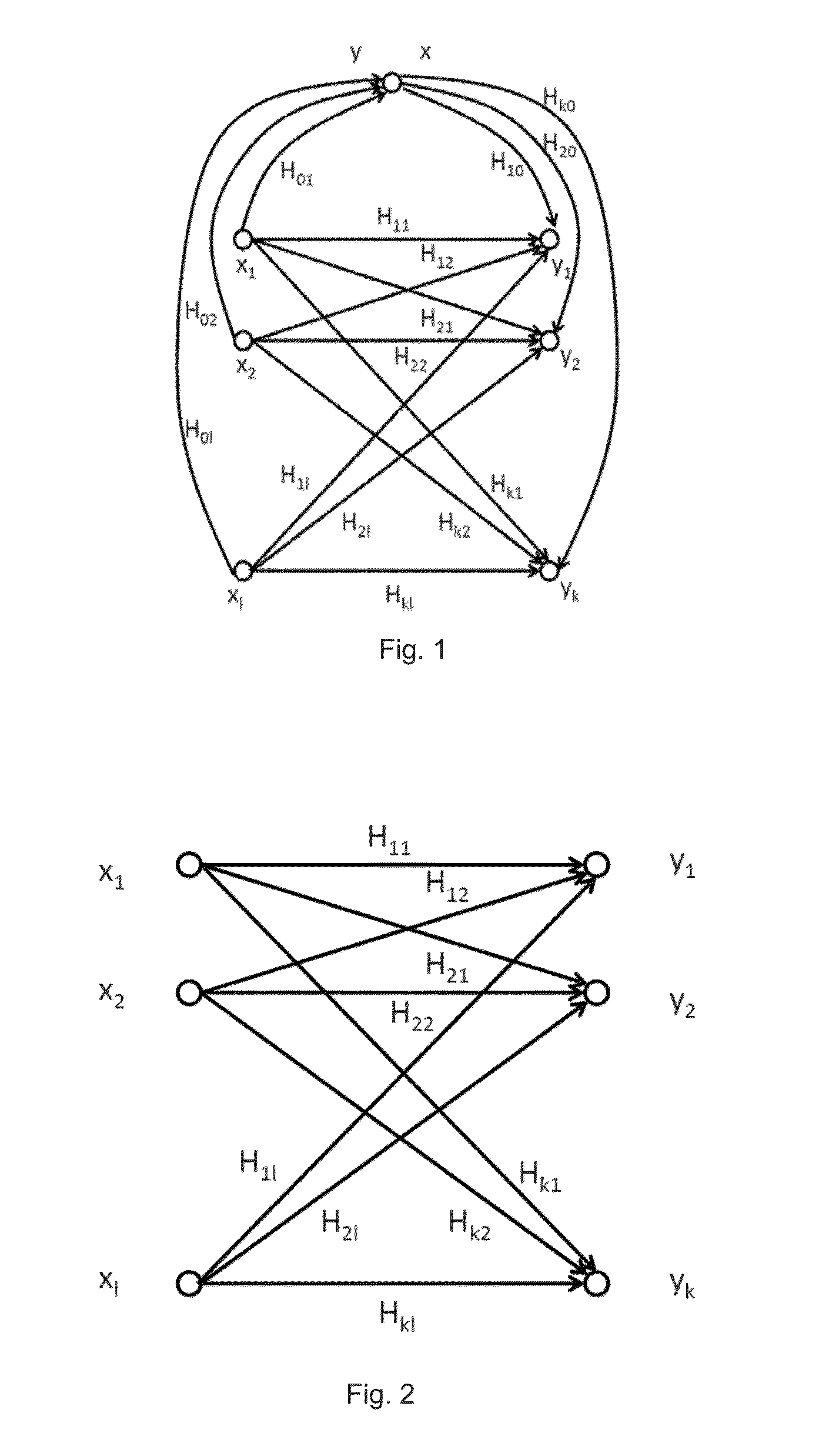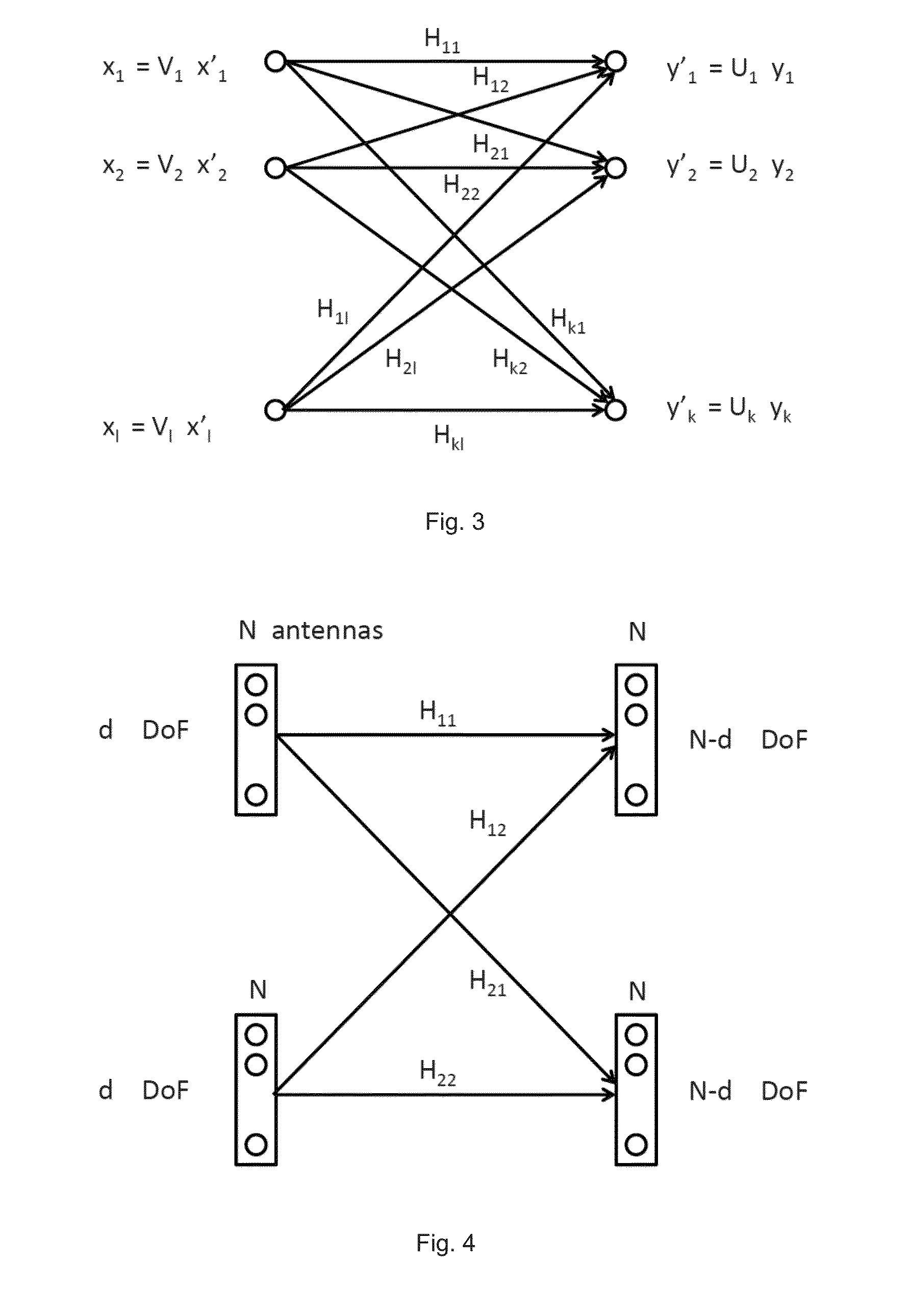Interference cancellation
a full duplex wireless and interference cancellation technology, applied in the field of interference cancellation, can solve the problems of reducing the opportunities for fd in a cell, the new interference form between the uplink and the downlink client, and the difficulty of embedding fd functionality in the beginning of energy-constrained client devices, so as to achieve the effect of increasing the spectral efficiency of wireless communication systems
- Summary
- Abstract
- Description
- Claims
- Application Information
AI Technical Summary
Benefits of technology
Problems solved by technology
Method used
Image
Examples
embodiment 1
[0059]One of the main challenges in deployment of full duplex systems in a network is the scaling of the promised doubling of the spectral efficiency by the full duplex operation when multi-user communication and multiple antenna systems are considered. In one aspect, the methods, systems and computer program products disclosed herein address a practical way of solving this challenge in a wireless system consisting of a single cell or multiple cells with a full duplex access points. Interface alignment is proposed where all the uplink nodes attempt to align their interferences only on a subset of resolvable degrees of freedom of each downlink user.
[0060]Further, enabling wireless full-duplex (from an access point (AP)) with multiple half duplex (HD) clients is key to widespread adoption to full-duplex (FD) commercial networks. However, enabling FD in such networks is fundamentally challenged by a new form of uplink-downlink interference (UDI) that arises between HD clients operating...
embodiment 2
[0149]The main challenge in deployment of full duplex systems in a network is the scaling of the promised doubling of the spectral efficiency by the full duplex operation when multi-user communication and multiple antenna systems are considered. This invention addresses a practical way of solving this challenge in a wireless system consisting of a single cell or multiple cells with a full duplex access points. The users in the cell might or might not be full duplex capable.
[0150]Some prior art have identified this problem without properly addressing it. In some prior art it is proposed to use imbalance mode of operation when the number of uplink users are usually much lower than the number of downlink users. Some work has looked into the possibility of selecting users that generate the list interference on other users for example through geo tagging or feedback of the channel states between the users. Some other work have considered the possibility of using a genie channel or in pra...
embodiment 3
[0159]Enabling wireless full-duplex (from an AP) with multiple half-duplex (HD) clients is key to widespread adoption of full-duplex (FD) in commercial networks. However, enabling FD in such networks is fundamentally challenged by a new form of uplink-downlink interference (UDI), arising between HD clients operating simultaneously in the uplink and downlink directions of FD. In this context, we first show that spatial interference alignment (IA) between clients is an effective and scalable technique to address UDI and hence enable FD in these networks, especially in the presence of MIMO. We then present our solution and system FDoS: Full-Duplex without Strings that incorporates this notion. We build the theory of applying spatial IA to full-duplex networks in general and present elegant, implementation-friendly constructions for generating feasible IA solutions that leverage the structure of interference specific to these networks. In the process, FDoS shows that four HD clients are...
PUM
 Login to View More
Login to View More Abstract
Description
Claims
Application Information
 Login to View More
Login to View More - R&D
- Intellectual Property
- Life Sciences
- Materials
- Tech Scout
- Unparalleled Data Quality
- Higher Quality Content
- 60% Fewer Hallucinations
Browse by: Latest US Patents, China's latest patents, Technical Efficacy Thesaurus, Application Domain, Technology Topic, Popular Technical Reports.
© 2025 PatSnap. All rights reserved.Legal|Privacy policy|Modern Slavery Act Transparency Statement|Sitemap|About US| Contact US: help@patsnap.com



